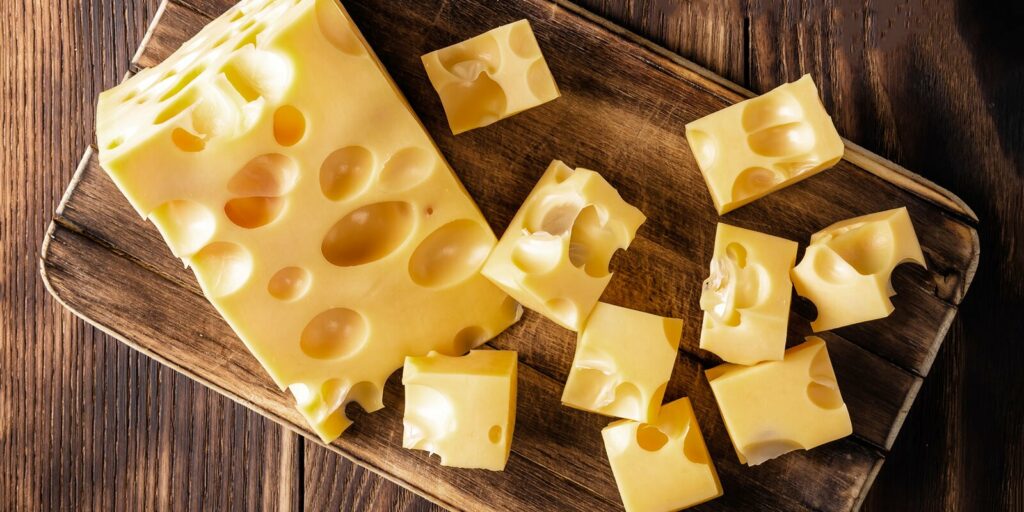Swiss cheese is known to be the healthiest of cheeses. In addition to being a great source of protein and calcium, it has lower sodium content and higher amounts of B12 and phosphorus compared to other cheeses. But did you know that the signature hole the Swiss cheese has is slowly disappearing?
The holes in the Swiss cheese are caused by the carbon dioxide produced by Propionibacterium shermanii. Some Swiss Cheeses seem to lack the signature holes because the milk used was too clean. Apparently, hay dust was the source of the bacteria.
Why Does the Swiss Cheese Have Holes?
We all know that cheese comes from milk, and the kind of milk used determines what kind of cheese you get. There are several kinds of cheeses easily identified by their flavor, texture, color, and taste. But the holes on the Swiss cheese truly give it a character of its own.
The first Swiss cheese was made in Switzerland in the 15th century. Locally, the cheese is called Emmental or Emmentaller.
In order to make cheese, you need to add bacteria to the milk. The chemical reaction causes the milk to curdle. The milk separates into two parts; whey and curds. The whey is drained and is often repurposed. The curd is what is made into cheese.
Swiss cheese, in particular, is made with a bacteria called Propionibacterium freudenrichii subspecies shermanii or P. shermanii. The cheese is kept in warm temperatures, 70 degrees Fahrenheit. The bacteria produce carbon dioxide under this ideal condition. It takes about four weeks for the holes to form.
When the bacteria grow, the gas they emit creates round openings. The hole stays in place by the time the cheese is cooled down. In total, it takes about six weeks for the cheese to be completely formed. It is then aged for an extra two months before it is brought to market. (Source: The Conversation)
Why Are the Holes Disappearing?
Over the years, the holes in the classic Swiss cheese started disappearing. In 2015, the Swiss Agricultural Institute discovered that the milk was technically too clean. Hay dust is also a factor in the creation of the holes in the cheese. These microscopic particles of hay help create the holes along with the bacteria.
Since modern barns are fully automated, cleaner milking systems have caused the holes to decline in size within the past two decades. (Source: CBS News)
What Other Cheeses Have Holes?
While the classic Swiss cheese does have larger holes, other countries also have their own kind of holed cheese. The Gruyere from France and the Fontina from Italy have small holes in them. In the US, cheesemakers developed the Baby Swiss, which is intended to be a modified version of the classic Swiss. The Gouda from the Netherlands is sometimes infused with cultures that create gas to produce the holes.
For harder cheeses, cheesemakers avoid the formation of the gases. Instead of having nice round holes, they turn into cracks which are quite unsightly. (Source: The Conversation)
